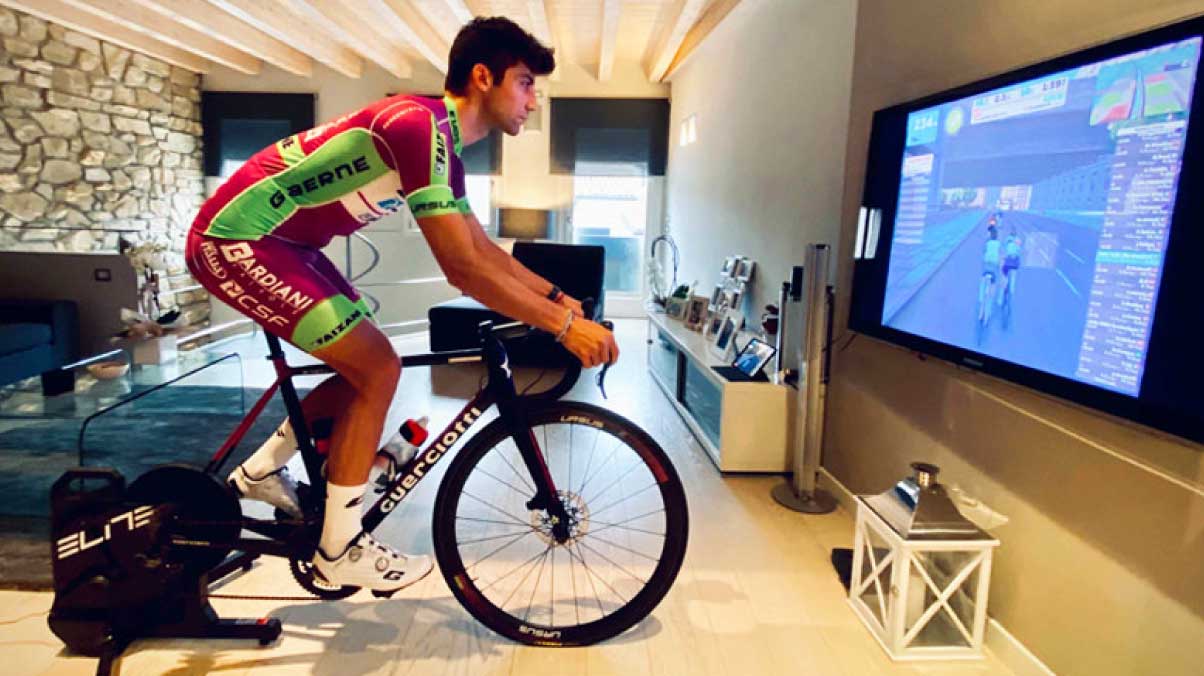The FTP Test: What is it and How to Do it
Tips & Trainingby Hunter Allen
After reading “Why Train with a Pedal-based Power Meter?”, in this article we’ll see where to start for the preparation of a power training program. The first thing to do when using a power meter is to find out your Threshold Value, similarly to what you do also with a heart rate monitor: this is the key point for setting one’s own Power Training Zones. This starting value is called Functional Threshold Power (FTP).
What is the FTP in cycling?
The FTP (Functional Threshold Power) in cycling is defined as the highest power a rider can maintain in a quasi-steady state without fatiguing. Or more simply, it’s an estimation of the workload a cyclist can sustain for an hour without a drastic increase in metabolite wastes (build-up of lactic acid).
Andrew Coggan, famous American exercise physiologist, was the first one to have the idea of combining the concept of lactate threshold with power data. He and his co-author Hunter Allen defined FTP in their first edition of “Training and Racing with a Power Meter” in 2006.
How to do an FTP test?
There are several methods to do an FTP value. We believe the easiest procedure is the one proposed by Hunter Allen himself, together with his colleague Andrew Coggan.
The Allen-Coggan test takes just 20 minutes, warm-up and cool-down excluded.
You’ll only need a bike, a stopwatch, and a power meter.
Even though the test can be performed accurately on a flat road or on the rollers or indoor smart trainer, we think that to better sustain the maximum effort required, the best is an outdoor uphill climb with moderate steepness (3-5%) and with no frequent stops (like traffic lights and crossroads).
The procedure is actually very easy: a starting warm-up followed by a 20-minute best effort, where you have to ride as hard as you can.
Finally, you’ll have to multiply the average power registered during these 20 minutes by 0,95: the result is your FTP, Functional Threshold Power.
It is very important that you always do the 5-minute all-out effort in your warm-up. This is done to reduce your freshness/anaerobic capacity so that that will not skew your 20-minute wattage numbers higher than what you could truly do for an hour.
FTP test procedure according to Allen and Coggan
- 20-minute easy riding warm-up
- 3 x 1 minute fast-pedaling interval up to max 120rpm, and rest at 80rpm for a minute between intervals
- 5 minutes at a lower pace to recover
- 5 minutes at your maximum pace. You should “explode” at the end of the 5-minute effort. It’s very important you do this before your 20-minute test.
- 5 minutes at a low pace to recover
- The real FTP: 20 minutes at your highest average power. Do not start too hard, but start strong and push yourself!
- 10-minute recovery at a moderate pace
Once the test is completed, the power data recorded will have to be downloaded on a dedicated software. There are several valid software on the web (e.g. The Sufferfest, TrainingPeaks, TrainerRoad, Rouvy, etc.) and also free ones (e.g. GoldenCheetah or StriveMax). Many of them will automatically determine your FTP and the relative Power Zones.

Why subtracting 5% to the average power?
Allen and Coggan observed that the average power sustained in a 20-minute FTP test is 5% higher than the one you can maintain in a one-hour test. The 20-minute test is really a “shortcut” to doing the full one-hour test as it’s much easier to focus for 20 minutes and also find a location where you can do a 20-minute FTP test. Some riders will need to subtract more than 5% if they have a naturally high anaerobic capacity, and other riders might only need to subtract 3% if they have a low anaerobic capacity.
Again, it’s very important that you always do the 5-minute all-out test before the 20-minute test in order to reduce some of your freshness and make 95% of your 20-minute test number closer to what your wattage might be for the full 60-minute test.
It’s also important to remember that the FTP test procedure suggested by the two American physiologists aims at simulating the maximum effort a subject can sustain for an entire hour without an excessive lactic acid build-up, but drastically reduces the test time to a third.
When to repeat the FTP test?
The Allen-Coggan test should be repeated every 6-8 weeks as your fitness changes in 6-8 week cycles. It’s important to make sure you test during the preparatory phase, before the beginning of the racing season, during the racing season and in the period that follows the races. It is possible to check one’s own FTP value at any time, autonomously and without the need for other tools than one’s own power meter.
Both professional cyclists and amateurs aim at having their FTP value increase over time and after each test, you will need to redefine all your Power Zones with increasingly higher values.
To find out how to calculate all your Power Zones, check out our blog, in particular, “Power Training Zones for Cycling”.

Hunter Allen has FTP online training programs available at FTP Archives - Shop Peaks Coaching Group.
He is the co-author of “Training and Racing with a Power Meter”, “Cutting Edge Cycling” and “Triathlon Training with Power”.
They are available at www.shoppeaks.com.
You can contact Hunter directly at www.PeaksCoachingGroup.com for personal coaching and camps.
Read the other articles
- The “Demands” of MTB: Should I Pedal Harder or Pedal Faster?
- The Power of Training with a Power Meter
- Why Train with a Power Meter for MTB?
- Training with a Power Meter: How to Get Started
- How to Use a Power Meter to Your Advantage in a Triathlon
- Off-Season Training
- How to Improve Your FTP
- Power Training Zones for Cycling
- Why Train with a Pedal-based Power Meter?
